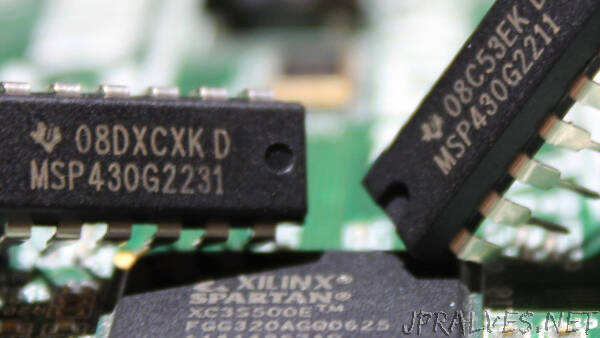
“A tiny (really tiny!) msp430-native microcontroller-like processor system written in platform independent VHDL
There is a pretty gap in the landscape of open-source soft-core processors between the tiny 8-bit processors and the chunky 32-bit ones. So I decided to fill this gap with a msp430-native 16-bit processor.
Introduction
The NEO430 is a TI msp430-native tiny microcontroller-like processor system. The system is highly configurable and provides of standard IO and peripheral components. If a certain module is not required at all it can be disabled and thus will not be synthesized. The project features Makefiles for Linux / Powershell / Windows’ Linux Subsystem and provides driver libraries for all peripheral devices as well as example programs.
To get the complete information overload take a look at the NEO430 Datasheet.
Differences to the Original MSP430 Processor
The NEO430 provides full ISA-compatibility to the original msp430 CPU. However, there are some differences. Here are the most important ones:
- Completely different processor modules with different functionality
- Up to 48kB instruction memory and 12kB data memory
- NEO430 tool chain (makefiles, boot-code and linker script) required for application compilation
- No support of CPU’s DADD operation
- Different numbers of instruction execution cycles
Processor Feature
- 16-bit open source soft-core microcontroller-like processor system
- Full support of the original MSP430 instruction set architecture (except for the DADD instruction)
- Code-efficient CISC-like instruction capabilities
- Tool chain based on free TI msp430-gcc compiler
- Application compilation scripts (makefiles) for Windows Powershell / Windows Subsystem for Linux / native Linux
- Completely described in behavioral, platform-independent VHDL (no macros, primitives, attributes, etc. used)
- Fully synchronous design, no latches, no gated clocks
- Very low resource requirements and high operating frequency
- Internal DMEM (RAM, for data) and IMEM (RAM or ROM, for code), configurable sizes
- Customizable processor hardware configuration:
- Optional multiplier/divider unit (MULDIV)
- Optional high-precision timer (TIMER)
- Optional universal asynchronous receiver and transmitter (UART)
- Optional serial peripheral interface (SPI), 8 or 16 bit tansfer data size, 6 dedicated CS lines
- Optional I2C-compatible two wire serial interface (TWI) supporting clock stretching
- Optional general purpose parallel IO port (GPIO), 16 inputs & 16 outputs, with pin-change interrupt and PWM option
- Optional 32-bit Wishbone bus interface adapter (WB32) - including bridges to Avalon (TM) bus and AXI4-Lite (TM)
- Optional watchdog timer (WDT)
- Optional cyclic redundancy check unit (CRC16/32)
- Optional custom functions unit (CFU) for user-defined processor extensions
- Optional 4 channel PWM controller with 4 or 8 bit resolution (PWM)
- Optional Galois Ring Oscillator (GARO) based true random number generator (TRNG) with de-biasing and internal post-processing
- Optional external interrupts controller with 8 independent channels (EXIRQ), can also be used for software-triggered interrupts (traps, breakpoints, etc.)
- Optional NCO-based programmable frequency generator with 3 independent channels (FREQ_GEN)
- Optional internal bootloader (2kB ROM) with serial user console and automatic boot from external SPI flash (like the FPGA configuration storage)”
